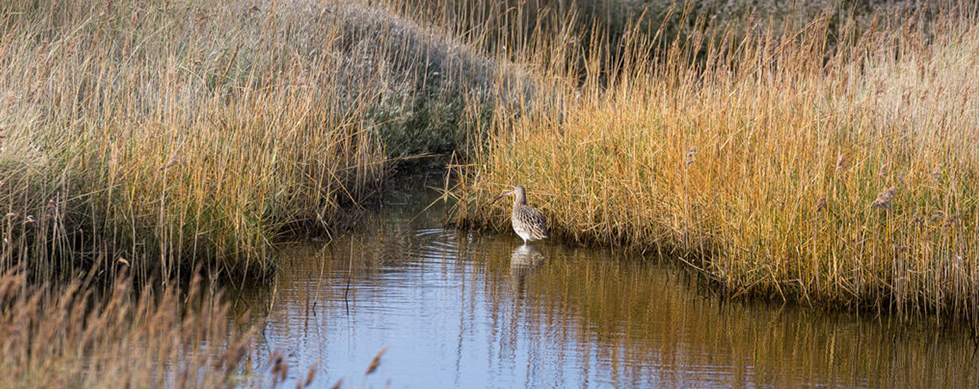
How to ensure our wetlands are protected from urbanisation
An opinion piece by Adam McKinnon, ACO Water Management, Regional Specification Manager
Urban developments are having a detrimental impact on the environment and biodiversity. As such, urban runoff needs to be managed carefully, through stringent treatment processes, to ensure long-lasting – or even permanent – damage does not take place. Let’s explore further.
Polluted wetlands
Before we explain the importance of treating urban runoff, it’s worth looking at the issues facing the UK and its wetlands. According to the State of Nature Report 2019, there has been a 90% depletion in low-land ponds and wetlands. Additionally, 86% of rivers in the UK do not meet ‘good’ ecological status. But what is causing this?
In March 2019, the Pollution in Towns Report suggested that 18% of water bodies were identified as being damaged by pollution from towns, cities and transport. When compared to 2015 levels – where the figure stood at 11% – there is evidence that the problem is worsening.
It is clear that the impact of urban development on biodiversity can no longer be ignored. Wetlands are particularly susceptible to pollution, as they’re often found in the lower reaches of water courses or link with numerous streams and waterways. As a result, they are placed under risk of collecting polluted water, which can significantly impact the health of the wetland.
Urbanisation, as alluded to before, has a significant impact on our polluted waterways. As a result of such developments, natural drainage decreases, while urban runoff and therefore the introduction of sediment, contaminants, oils, metals and hydrocarbons into the water, increases.
It is clear action needs to be taken to turn the tide on our polluted water, but if natural systems are no longer able to withstand the challenges, what options are there? Sustainable drainage systems (SuDS) offer one route to manage both the volume and flow of runoff, reducing the downstream flow of surface water and the risk of flooding.
SuDS mimic natural drainage, improving water quality and enhancing the amenity and biodiversity value of the environment. This is achieved by lowering the flow rates, while simultaneously increasing water storage and reducing the transport of pollution to the water environment.
Ensuring the right treatment
Once the water is collected, it must undergo a stringent treatment process to ensure it is cleaned to a standard that can help protect water sources and biodiversity. It is recommended that an appropriate train of SuDS components – including filter strips, filter drains, swales, bioretention systems, permeable pavement, detention basins, ponds, wetlands and proprietary treatment systems – are installed. These components help reduce the risk of pollutants entering the water courses and groundwater, and ensure the four key steps of a SuDS management train – collect, clean hold, release – are met.
Interception solutions should also be utilised at the beginning of the treatment train, to ensure pollutants are managed as close to the source as possible.
Those designing a SuDS management train should look towards Chapter 26 of the CIRIA SuDS Manual C753, which offers a range of different features and their treatment values through its Simple Index Approach (SIA). The Local Lead Flood Authority (LLFA) expect all sites to follow the SIA to demonstrate that appropriate treatment is applied to mitigate the impact of new developments.
To ensure the development has the right solution, advice should be sought from water management specialists. ACO’s V-Septor and Q-Ceptor, for example, manage the vital interception of hydrocarbons. Separators are crucial in the ‘clean’ element of water management, helping to prevent pollution from entering into soil and watercourses. They can also reduce sediment build-up in attenuation tanks downstream. When installed prior to ACO StormBrixx, it decreases how often the tank has to be cleaned and maintained, because less silt is flowing down the system. Failure to incorporate this step of frequent surface water treatment can result in severe harm to the water course and natural habitats, potentially resulting in irreversible damage to soil.
The final step of the water management train – release – is another critical part of the process. Water must be properly attenuated and released into the natural water course once it has been cleaned. Releasing in a controlled manner can help mitigate flooding, so it is crucial that this step is not overlooked. Introducing infiltration (i.e., where the ground is permeable), or through a device such as ACO’s Vortex Flow Control, can ensure that a safety-first and best-practice approach is taken.
Time to take action
Urbanisation is set to increase, but there is also no indication that the flooding issues disrupting the UK are set to drop. In fact, a recent report by the Environment Agency warned that winter rainfall is expected to increase by 13% by the 2080s. Water quality has a huge impact on our natural habitats and water courses, and so changes must be made to ensure they are protected for our future generations. The construction industry must lead by example, and ensure best practice is undertaken on every project.
ACO has a range of SuDS solutions to support those working on projects which require a system to mitigate the issues explained in this article. Additionally, its team of designers are available to provide expert advice and support in ensuring the best systems are in place. To find out more, please visit www.aco.co.uk/sustainable-drainage-systems-(suds).